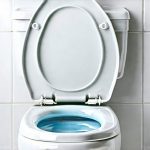Urinary tract infections (UTIs) are incredibly common, causing discomfort for millions annually. Most people associate UTIs with bacterial infection, often stemming from E. coli, and rightly so – bacteria are the primary cause. However, there’s a growing curiosity about whether factors beyond bacterial invasion can contribute to UTI symptoms or even trigger them directly. One question frequently arises: can simply not drinking enough water, that is, dehydration, be solely responsible for what feels like a UTI? It’s a valid question, particularly given how often people experience mild urinary discomfort and the link between hydration and overall health. Understanding this relationship requires delving into the complexities of both UTIs and the body’s natural defenses against infection.
The idea that dehydration can cause a UTI is nuanced. While dehydration doesn’t directly introduce bacteria into the urinary tract, it fundamentally alters the environment within which bacteria thrive – or don’t. A well-hydrated system flushes out potential pathogens, creating a less hospitable landscape for bacterial growth. Conversely, concentrated urine, a hallmark of dehydration, provides a more favorable breeding ground and makes it harder for the body to naturally clear away unwelcome microorganisms. This doesn’t mean every dehydrated person will get a UTI, but it does highlight how insufficient fluid intake can significantly increase susceptibility and potentially mimic UTI symptoms. It’s also crucial to remember that many conditions share similar symptoms with UTIs making accurate self-diagnosis difficult.
The Role of Hydration in Urinary Tract Health
Hydration is arguably the first line of defense against UTIs, even before considering antibiotics or other treatments. Think of your urinary system as a flowing river; consistent flow helps sweep away debris and prevents stagnation. When you’re dehydrated, that river slows to a trickle, allowing bacteria to settle and multiply. This explains why increased water intake is often the first recommendation for someone experiencing mild UTI symptoms – it’s not necessarily treating an infection, but rather supporting the body’s natural cleansing mechanisms. Maintaining adequate hydration isn’t just about drinking when you feel thirsty; it’s a proactive habit that supports overall urinary tract health and reduces the risk of bacterial adherence.
The concentration of urine is directly linked to hydration levels. Diluted urine – achieved through sufficient water intake – makes it harder for bacteria to establish themselves. It also minimizes irritation to the bladder lining, which can often be mistaken for UTI symptoms. Concentrated urine, on the other hand, contains higher concentrations of waste products and irritants, increasing inflammation and discomfort. Furthermore, dehydration can impact kidney function, potentially reducing their ability to filter toxins effectively, further exacerbating urinary tract issues. Proper hydration isn’t a cure-all but it’s a powerful preventative measure.
It’s important to note that the “eight glasses of water a day” rule isn’t universally applicable. Individual fluid needs vary based on activity level, climate, diet, and overall health. Factors like consuming diuretics (coffee, tea, alcohol) or engaging in strenuous exercise will increase your hydration requirements. Listening to your body’s cues – thirst being the primary indicator – is crucial, but proactively incorporating fluids throughout the day remains essential for optimal urinary tract function.
Mimicking UTI Symptoms: Dehydration’s Impact on Urinary Discomfort
The symptoms of dehydration can closely resemble those of a UTI, leading to confusion and misdiagnosis. Frequent urination (though often in small amounts), burning sensations during urination, and pelvic discomfort are all common experiences associated with both conditions. This overlap is where the misconception that dehydration causes UTIs arises. In reality, dehydration doesn’t introduce bacteria, but it creates an environment conducive to bacterial growth and simultaneously causes symptoms that mirror a UTI. The body’s response to concentrated urine – inflammation and irritation of the bladder lining – can feel remarkably similar to an actual infection.
The intensity of these “dehydration-mimicked” symptoms often depends on the degree of dehydration. Mild dehydration might cause only slight discomfort, while severe dehydration can lead to significant pain and urgency, making it difficult to distinguish from a true UTI without proper medical evaluation. This is why self-treating with increased fluids isn’t always advisable; if symptoms persist or worsen despite adequate hydration, seeking professional medical attention is crucial to rule out an actual infection requiring antibiotics. Don’t assume it’s just dehydration – get a diagnosis.
The confusion is further compounded by the fact that some people are more prone to experiencing these mimic symptoms than others. Individuals with sensitive bladders or pre-existing urinary tract conditions may be particularly susceptible to feeling discomfort even with mild dehydration. It’s also important to remember that stress and anxiety can amplify perceived sensations, making it harder to accurately assess the source of urinary discomfort.
Understanding UTI Risk Factors Beyond Hydration
While hydration is vital, it’s just one piece of the puzzle when it comes to UTIs. Several other factors significantly increase your risk of developing a true bacterial infection:
- Female Anatomy: Women have shorter urethras than men, making it easier for bacteria to reach the bladder.
- Sexual Activity: Sexual intercourse can introduce bacteria into the urethra.
- Menopause: Reduced estrogen levels after menopause can alter the urinary tract’s microbiome, increasing susceptibility to infection.
- Catheter Use: Catheters provide a direct pathway for bacteria to enter the bladder.
- Underlying Medical Conditions: Diabetes and immune deficiencies can increase UTI risk.
These factors highlight that dehydration isn’t the sole culprit in most UTIs – it’s often one contributing factor among many. Addressing these underlying risks is equally important for prevention. For example, practicing good hygiene after intercourse, managing chronic conditions like diabetes, and avoiding prolonged catheter use can all help reduce your susceptibility to infection.
Distinguishing Between Dehydration & a UTI: When To Seek Medical Attention
Determining the cause of urinary discomfort – dehydration or a UTI – can be challenging without professional evaluation. However, certain clues can help guide your decision. If your symptoms improve significantly with increased fluid intake within 24-48 hours, it’s likely dehydration was the primary issue. Conversely, if symptoms persist, worsen, or are accompanied by other signs such as:
- Fever
- Chills
- Back pain
- Nausea or vomiting
- Blood in your urine
…then it’s essential to consult a doctor immediately. These indicate a potential bacterial infection requiring antibiotic treatment. A simple urine test (urinalysis) can quickly confirm the presence of bacteria and determine the appropriate course of action. Don’t delay seeking medical attention if you suspect a UTI. Self-treating with fluids alone when an infection is present can lead to complications, such as kidney infections.
Prevention Strategies: Hydration & Beyond
Preventing UTIs involves a multifaceted approach that extends beyond simply drinking more water. Here’s a practical plan incorporating both hydration and other preventative measures:
- Stay Adequately Hydrated: Aim for pale yellow urine – a sign of good hydration.
- Practice Good Hygiene: Wipe from front to back after using the toilet to prevent bacterial spread.
- Urinate After Intercourse: This helps flush out any bacteria that may have entered the urethra.
- Avoid Irritating Products: Limit use of harsh soaps, douches, and scented feminine hygiene products.
- Consider Cranberry Products (with caution): While research is mixed, some studies suggest cranberry juice or supplements may help prevent bacterial adherence, but discuss with your doctor first as they can interact with medications.
- Manage Underlying Conditions: Effectively manage diabetes and other conditions that increase UTI risk.
By adopting these strategies, you can significantly reduce your susceptibility to UTIs and maintain optimal urinary tract health. Remember, hydration is a cornerstone of preventative care, but it’s just one component of a comprehensive approach. Prioritizing overall health and seeking medical attention when necessary are crucial for staying comfortable and avoiding complications.





















